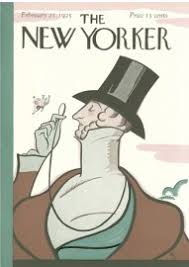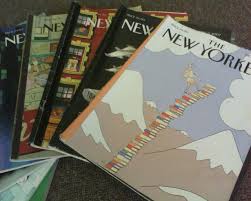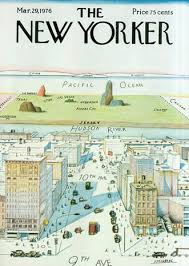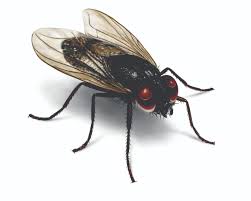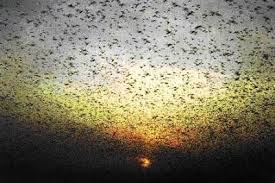1. Think Before You Stink
—- 6th grade teacher
The devastating consequences of this grade school adage only became apparent in my professional life. I was working against a deadline for an article on PET scans, a new and controversial medical technology at the time. I wanted to get reaction comments from the PET Society of America, in fact I felt that I was doing them a tremendous favor in giving them this opportunity to be quoted in the American Medical Association newspaper. My increasingly strident calls to the Society went unanswered. Finally a woman called, who said she was calling on behalf of her husband, the executive director of the Society. I lit into her, saying that the deadline had passed and that the Society had lost its golden opportunity. Silence followed my tirade, during which I presumed the woman was strategizing on how to beg for forgiveness. She apologized that her husband had not responded promptly. He had just died in a car crash.
Several months later I met a stone craftsman at a spring art fair and commissioned him to engrave a table with a map of the Great Lakes. It was a Christmas gift for my parents, so I told him there was no rush I started calling him in the fall with gentle reminders, but he kept putting me off. Finally he told me I could pick it up on December 24th. My mind stewed and frothed as I fought my way through the punitive holiday traffic. I burst into his studio, ready to be at least crabby, if not pissy. However, chastened by my recent experience, I held off and was nothing but cheerful sunshine and light. He apologized for the delay, explaining that he’d been working on a headstone for his mother. His young nephew was unaware that his grandmother had a severe peanut allergy and inadvertently gave her a lethal cookie. She died in front of the family.
Now I try to remember how little time it takes to be thoughtful and kind. It takes even less time to be careless and cruel.
2. It is better to be stupid than look stupid
—– First Boss
I was occasionally asked to be a spokesperson for the American Medical Association. My expertise was very thin, related to the niche field of technology assessment, but the audience assumed I was fair game for anything related to the AMA, ranging from tort reform to physician reimbursement. Eager to please, I always tried to answer questions, even if I didn’t know what I was talking about.
I got what my boss was saying – understand when you’re out of your depth and then shut up. However, it does insight to recognize this critical juncture. I rephrased his advice to “Be smart enough not to look stupid.”
I also realized that looking smart requires timing. Residency in medical school was a competitive environment with students strutting their stuff by citing detailed data from recently published studies. I couldn’t compete with that. I learned to say nothing, let them spout off, and then stepped forward at the end with a concluding or summary statement, leveraging what they said to my advantage. Worked like a charm.
I am reminded of this strategy with my recent spate of bridge playing. When you play a no-trump hand the best strategy is to lay in the weeds, let the others flash their face cards, and then come on strong at the end. With the ace and king out of the way, my lesser cards emerge as winners. With a flourish, I can make my contract with the lowly two of clubs. Impressive and satisfying.
3. Sweaty Spaghetti
—-Collection of Fan Brown’s Hinky Pinkies
At sleep-away summer camp, my mother sent me her word game poems called “Hinky Pinkies,” consisting of two rhyming words with a definition. The number of syllables in each word mirrored the number of syllables in hink and pink. For example, a “hink pink” for “casual 5K” could be a “fun run,” or a hinky pinky for “improved cardigan” would be a “better sweater.”
She wrote, “What is a hinky pinkety for perspiring noodles?”
She loved her unexpected and creative rhymes, matched only by her definition. My mother introduced me to the joy of word play and even more granular, the joy of letters. Like her, I always have a rhyming dictionary at hand. From hinky pinkies came a love of crosswords and other word games like Boggle and anagrams.
When I go on vacation, I always bring a bag of letter tiles.
4. “Diarrhea is a bowel movement that assumes the shape of its container.”
— Diarrhea, Disease-a-Month
In my second year of medical school, I subscribed to a little periodical called “Disease-a-Month,” basically a Cliff Notes for the aspiring doctor. Each month the bright yellow pamphlet would provide a summary of the most salient facts about a particular ailment: diabetes, asthma, hypertension, etc. I was pleased to delve into the nitty gritty of the humble and humiliating “Diarrhea.”
I was hooked by the introductory chapter that discussed the challenges of creating a universally accepted definition. Now many probably think that diarrhea is similar to pornography – while it might be difficult to define, you certainly know it when you see it. But nothing says “science” more than a conference of bigwigs for the express purpose of reaching a consensus definition.
Here is their offering:
“Diarrhea is a bowel movement that assumes the shape of its container.”
I delighted in the simple elegance of this definition. It doesn’t matter if the container is a square, rhombus, or a curlicue, if the bowel movement fills it, it has to be diarrhea. Oddly enough, I endorse this definition based on a summer laboratory job that involved sorting through stool samples to identify parasites. Specimens were delivered in a wide variety of containers – whatever the patient had handy at home – the definition worked perfectly. I got mayonnaise jars, sardine tins and a plastic bag.
Simple, concise, unexpected. If someone ever asks me the definition of clever, I can think of no better example than the defining essence of diarrhea.
I also appreciated that the concept need not be limited to diarrhea. We are all limited by the shape of our containers.
5. “The minor irregularities of this garment are part of its hand-made charm.”
— Tag on sweater, hand knit in Peru
I envision the owner of an artisan shop sorting though the shipment of sweaters from Peru. As she holds up a sweater, she notices a few dangling bits of yarn, one sleeve suspiciously longer than the other and a lopsided neck. Time to manage expectations. She is grateful that the wool is stretchy so that the askew sleeves and neck can be yanked into symmetry. Let’s turn a negative into a positive, she thinks. Asymmetry is not a flaw, it is an irregularity and a minor one at that. Even better an irregularity is a sign of authenticity, tying the customer directly to the knitter. The marketing director wants the customer to see that Incan woman sitting on her sunny stoop of high in the Andes, the sweater on her lap, children and chickens clucking around her. She solidifies the image by giving the knitter a name, puts a picture on the tag and in a final flourish, packages the whole concept as charming.
It worked for me. I loved the lumpy irregularities of my sweater, but I also appreciated the broader context of what started as off-hand marketing gimmick. We are all a mish-mash of hand-made irregularities. On good days, I hope mine add up to charm.
Follow Liza Blue on:Share:





